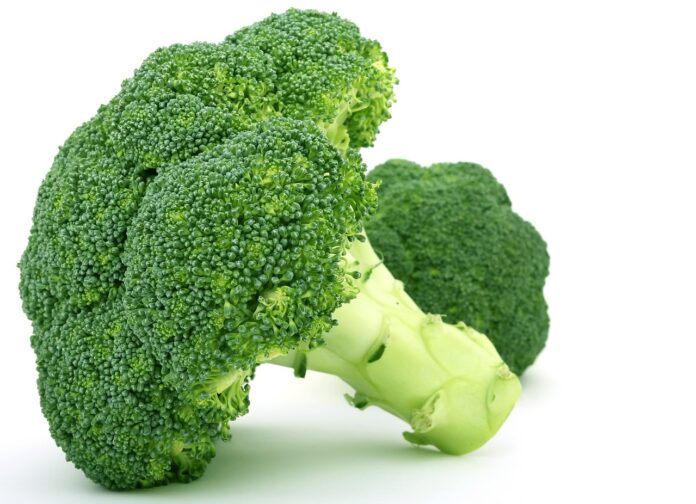Broccoli is a popular, nutrient-rich vegetable belonging to the cruciferous family, which also includes cabbage, kale, and Brussels sprouts. It features a thick green stalk crowned with clusters of tightly packed, small, dark green florets, sometimes tinged with purple.
Scientific Classification: Broccoli, scientifically known as Brassica oleracea var. italica, originates from the eastern Mediterranean and Asia Minor. It was developed from wild cabbage in the 6th century BCE and spread to Europe, where it became a staple vegetable.
Interesting Facts About Broccoli:
- Rich History: Broccoli was first cultivated in the northern Mediterranean around the 6th century BCE. In the United States, it wasn’t widely known until the 20th century, when Italian immigrants made it a culinary staple. Thomas Jefferson, a broccoli enthusiast, recorded planting the vegetable at Monticello in 1767, alongside other experimental crops like tomatoes and eggplants
- McDonald’s attempted a curious innovation in 2014 by developing bubblegum-flavored broccoli to encourage children to eat healthier. The fast-food giant’s idea was to make broccoli more appealing to kids by infusing a familiar sweet flavor. However, during taste tests and focus groups, children were confused and unimpressed with the unusual flavor. The experiment didn’t align with consumer expectations, leading McDonald’s to abandon the project.
- Etymology: The term “broccoli” is derived from broccolo, which means “cabbage sprout” in Italian. This name reflects its close genetic relationship to cabbage, kale, and other cruciferous vegetables that share the same genus, Brassica. The word was adopted into English in the 17th century as broccoli became more familiar in Europe
- The United States, known for its vast broccoli fields primarily in California, is one of the largest broccoli producers globally. China dominates, producing over 11 million tons annually, followed by India. The cultivation process involves labor-intensive hand-harvesting due to the plant’s delicate nature
- Nutritional Powerhouse: Broccoli is exceptionally nutrient-dense, containing high levels of vitamin C (81 mg per cup) and vitamin K, vital for bone health and immune function. It also boasts a wide array of phytochemicals like sulforaphane, which has shown potential in cancer prevention studies, particularly against prostate and breast cancers
- Different Varieties: Among the 27 varieties, Calabrese broccoli is the most well-known. Purple broccoli, a less common variety, owes its color to anthocyanins, a type of antioxidant. Another form, sprouting broccoli, is favored for its numerous tender shoots rather than one central head
- Flowering Plant: If left unharvested, the tightly clustered florets bloom into bright yellow flowers, signaling that the plant has matured. This flowering process reveals broccoli’s true nature as an immature flower bud, not just a vegetable
- Edible Parts: The entire broccoli plant is edible. The stalk, often discarded, is rich in fiber and has a slightly sweeter taste than the florets. The leaves are nutrient-rich and can be cooked like spinach or used in soups and salads
- Consumption Growth: Broccoli consumption in the United States has surged over the past few decades, increasing by more than 940% since 1980. This reflects a greater public awareness of its health benefits and the influence of nutrition campaigns
- Fast-Growing Crop: Broccoli is a relatively fast-growing plant, taking 70 to 140 days to reach maturity depending on the variety. Ideal growing conditions include cool temperatures and full sun exposure, which promote the development of its signature dense florets
- High Vitamin C: Broccoli is an excellent source of vitamin C, with one cup providing nearly the same amount as an orange. This makes it a perfect immune-boosting food while offering fewer calories, making it a great option for weight management
- Protein Content: Compared to most vegetables, broccoli is relatively high in protein, providing about 3 grams per cup. While not a complete protein source, it pairs well with other plant-based foods to help meet dietary protein needs, especially in vegetarian and vegan diets
- Cultural Symbol: In Italian culture, broccoli is often associated with health and tradition. It plays a key role in dishes like orecchiette con le cime di rapa (pasta with broccoli rabe), reflecting the vegetable’s cultural significance and culinary heritage
- Ancient Use: The ancient Romans not only cultivated broccoli but also revered it for its perceived health properties. It was served raw in salads or boiled with wine, showing the plant’s longstanding place in Mediterranean diets and herbal medicine
- Sulforaphane, a sulfur-containing compound found in broccoli, has been extensively studied for its anti-cancer properties. It activates enzymes that neutralize carcinogens and may lower the risk of heart disease and diabetes
- Temperature Sensitivity: Broccoli’s ideal growing temperature is between 60 and 70 degrees Fahrenheit. Extreme heat can cause the plant to bolt, or flower prematurely, which decreases its quality and market value
- The heaviest broccoli ever grown weighed 35 pounds and was grown by John and Mary Evans in Palmer, Alaska. The record was set in 1993, and the achievement remains celebrated in agricultural competitions
- Perishable Nature: Broccoli’s freshness can be maintained for three to four weeks when stored at 32°F with high humidity. This perishable nature means it is often harvested, packed, and shipped quickly to maintain quality
- Jefferson’s Legacy: Thomas Jefferson experimented with growing various crops at Monticello. His records indicate that he may have been the first person to grow broccoli in the United States, reflecting his role in American agricultural history
